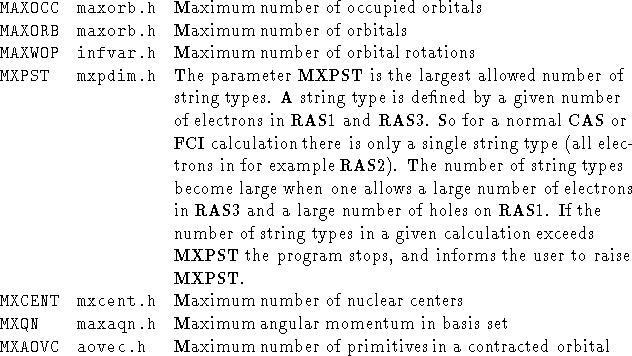
Most of the DALTON program has in principle no limitations on the
size of the problem one needs to be able to handle, apart from
physical memory requirements and available disc space. As indicated in
the previous chapter, the default version of the program can handle
1200 basis functions, 60 nuclei and 180 occupied and up to h
functions in the basis set. However, most such settings are adjustable
to suit your own need, at the expense of larger (or smaller of course)
static memory requirements. The following list contains the parameters
it will be most likely that you will find a need for changing with the
corresponding include file in which the variable appears and a
short description of what it defines. However, we note that the
program sometimes will require the user to change other parameters not
included in this list, and these variables are then easily found in the
include directory by grep'ing for its occurance. We also point out
that whenever a change is made to one or more include files, it is
most safe to do make clean and rebuild the program from
scratch, as we have not included the dependency of the fortran files
on the include files.

SPECIAL NOTE: Even after adjustingMXAOVC, it will be necessary to explicitly reset.MAXPRIin the HERMIT input modules as well in order to increase the contraction depth in the input processing. See Sec..